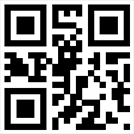In the realm of desk accessories, calendars are indispensable tools that not only help us stay organized but also serve as decorative elements in our workspaces. When it comes to choosing the right desk calendar, one is often faced with a plethora of materials and styles. Among these, Medium-Density Fiberboard (MDF) desk calendars have gained popularity.
Medium-Density Fiberboard (MDF) Desk Top Calendars
MDF is an engineered wood product made from wood fibers, wax, and resin. MDF desktop calendars offer several advantages that make them a popular choice among consumers.
Pros:
Affordability: MDF is known for being a cost-effective material. As a result, MDF desktop calendars are often more budget-friendly compared to calendars made from solid wood or other high-end materials.
Versatility in Design: MDF can be easily molded and shaped, allowing for a wide range of design possibilities. Manufacturers can create intricate and detailed calendar designs, offering consumers a variety of aesthetic options to match their style and preferences.
Durability: MDF is a stable and durable material that resists warping and cracking. This makes MDF desk top calendars a practical choice for those seeking a long-lasting and sturdy calendar option for their workspace.
Customization: MDF can be easily painted, veneered, or coated, providing a smooth surface for customization. This allows for a high degree of personalization, enabling consumers to match the calendar with their existing décor or add unique touches.
Cons:
Not Solid Wood: While MDF can mimic the appearance of solid wood, it lacks the authenticity and natural grain of real wood. Some consumers may prefer the genuine look and feel of natural materials.
Weight: MDF is denser than some alternative materials, making MDF desktop calendars relatively heavier. This may be a consideration for those who prioritize portability or have specific weight restrictions in their workspace.
Alternative Desk Calendar Materials
1. Solid Wood:
Pros:
Natural Aesthetic: Solid wood exudes natural beauty with unique grain patterns and textures. It appeals to those who appreciate the authenticity and warmth of genuine wood.
Durability: Solid wood is robust and resistant to wear, ensuring a long lifespan for the desk calendar. It can withstand the test of time and maintain its aesthetic appeal.
Cons:
Cost: Solid wood desk calendars are often more expensive than their MDF counterparts. The high-quality material and craftsmanship contribute to the elevated price point.
Vulnerability to Moisture: Solid wood is susceptible to moisture and changes in humidity, which can lead to warping or cracking over time.
2. Acrylic:
Pros:
Modern and Sleek: Acrylic desk calendars offer a contemporary and sleek appearance. They are popular for minimalist and modern design preferences.
Lightweight: Acrylic is lightweight, making these calendars easy to move and reposition as needed.
Cons:
Scratch Prone: While acrylic is durable, it is prone to scratches. Care must be taken to avoid surface damage and maintain the calendar's clarity.
Limited Customization: Compared to MDF, acrylic has limitations in terms of customization. It may not be as easily painted or adorned with intricate designs.


 English
English
 Deutsch
Deutsch




cm.jpg?imageView2/2/w/360/h/360/format/jpg/q/75)



cm.jpg?imageView2/2/w/360/h/360/format/jpg/q/75)
cm.jpg?imageView2/2/w/360/h/360/format/jpg/q/75)
cm-2.jpg?imageView2/2/w/360/h/360/format/jpg/q/75)
cm.jpg?imageView2/2/w/360/h/360/format/jpg/q/75)






